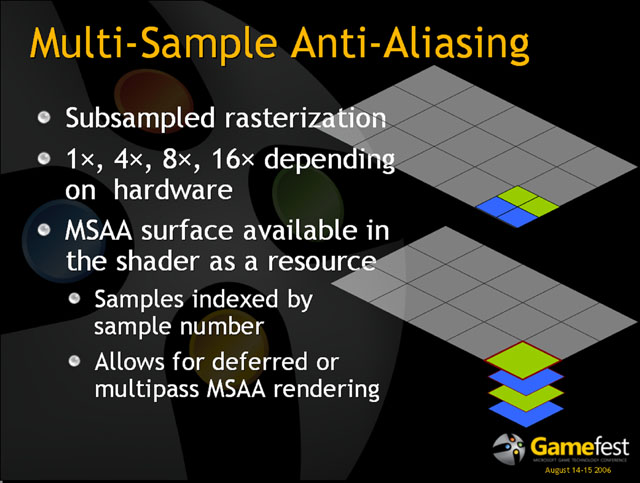Jawed
Legend
Over here:
http://www.beyond3d.com/forum/showpost.php?p=830639&postcount=16

the subject of MSAA with deferred shading has come up.
So, how would D3D10 allow MSAA to be implemented in a deferred shading engine
How would it perform, is it likely to be viable any time soon
Would MSAA in such games be a compelling reason to upgrade to Vista
Or, is deferred shading destined to be nothing more than a medium-term fad, a bit like stencil shadowing
Jawed
http://www.beyond3d.com/forum/showpost.php?p=830639&postcount=16

the subject of MSAA with deferred shading has come up.
So, how would D3D10 allow MSAA to be implemented in a deferred shading engine
How would it perform, is it likely to be viable any time soon
Would MSAA in such games be a compelling reason to upgrade to Vista
Or, is deferred shading destined to be nothing more than a medium-term fad, a bit like stencil shadowing
Jawed
